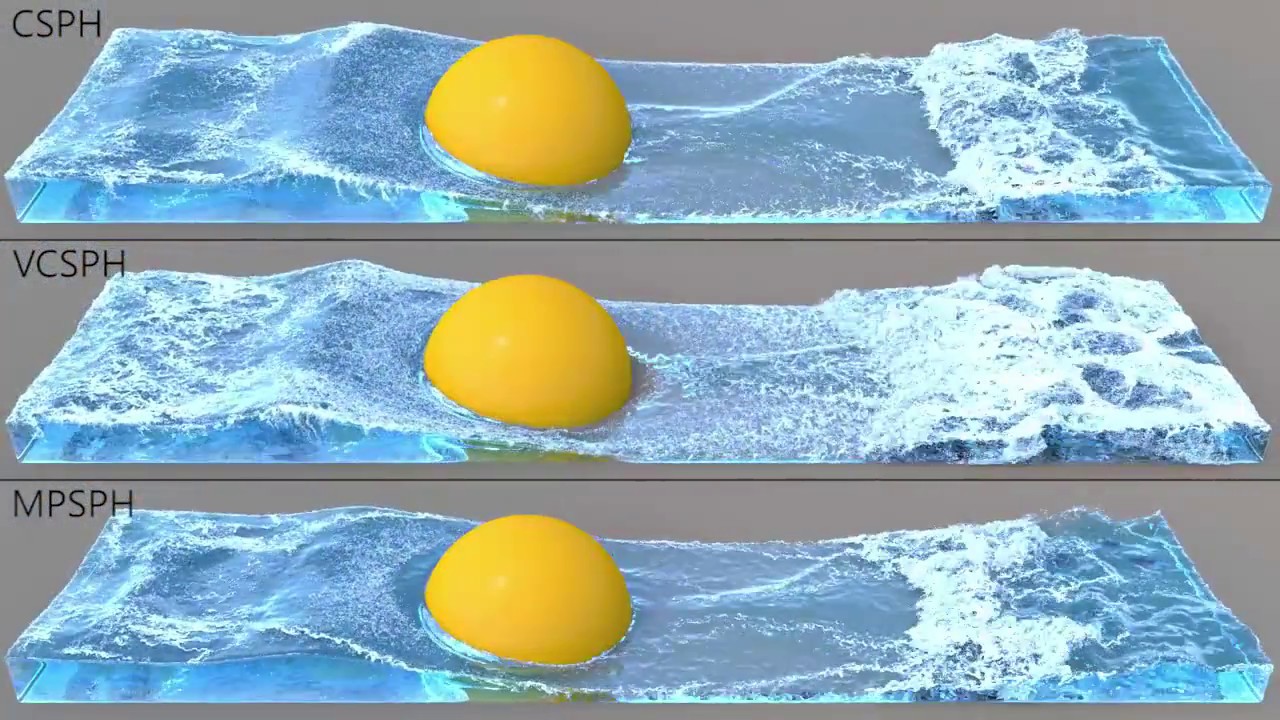"In this paper we introduce a novel micropolar material model forthe simulation of turbulent inviscid uids. The governing equations
are solved by using the concept of Smoothed Particle Hydrody-
namics (SPH). As already investigated in previous works, SPH uid
simulations suer from numerical diusion which leads to a lower
vorticity, a loss in turbulent details and nally in less realistic results.
To solve this problem we propose a micropolar uid model. The
micropolar uid model is a generalization of the classical Navier-
Stokes equations, which are typically used in computer graphics
to simulate uids. In contrast to the classical Navier-Stokes model,
micropolar uids have a microstructure and therefore consider the
rotational motion of uid particles. In addition to the linear velocity
eld these uids also have a eld of microrotation which represents
existing vortices and provides a source for new ones. However, clas-
sical micropolar materials are viscous and the translational and the
rotational motion are coupled in a dissipative way. Since our goal
is to simulate turbulent uids, we introduce a novel modied mi-
cropolar material for inviscid uids with a non-dissipative coupling.
Our model can generate realistic turbulences, is linear and angular
momentum conserving, can be easily integrated in existing SPH
simulation methods and its computational overhead is negligible."
